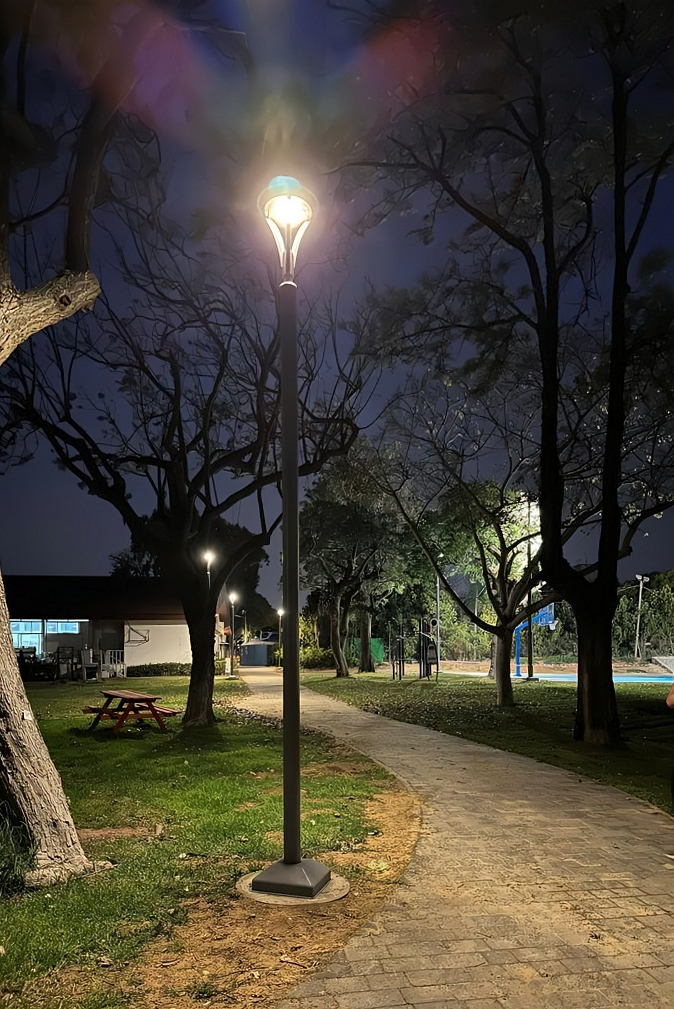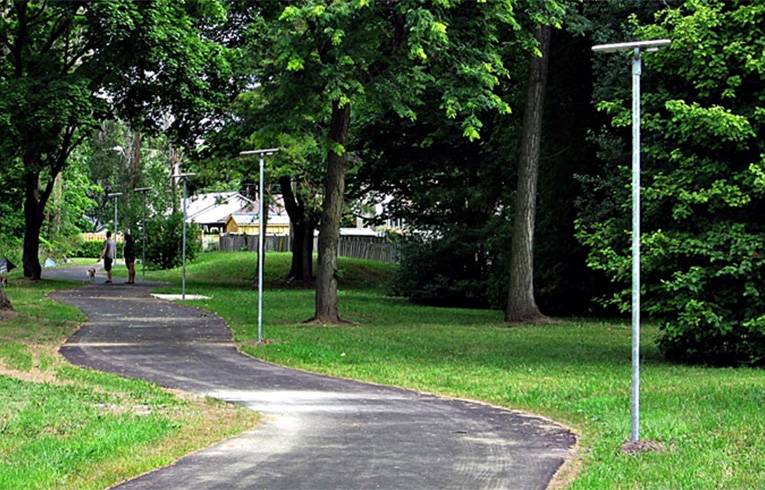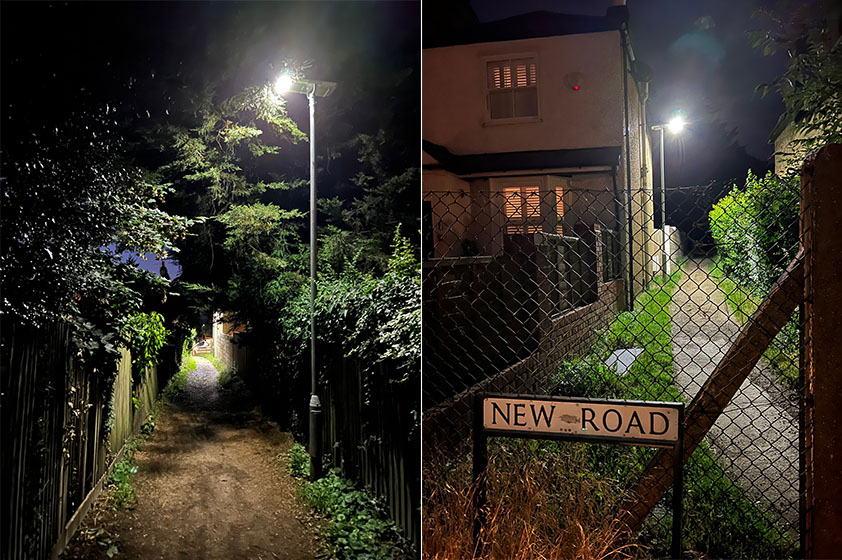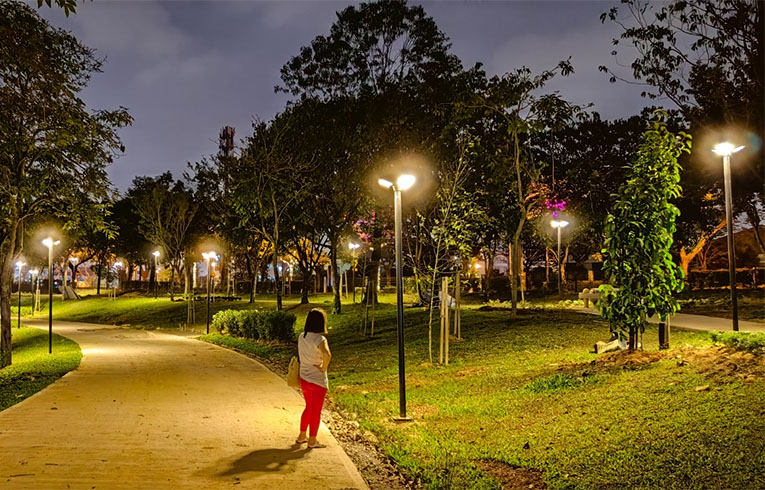As the sun sets earlier and earlier in the winter, people have less time to enjoy their neighbourhood parks due to inadequate lighting. In turn, adults and children alike miss out on the important health benefits of being outdoors, such as increased energy and reduced anxiety. However, the advent of solar-powered light fixtures offers innovative solutions to these problems. In this paper, we’ll explore how solar-powered light fixtures can be used to improve the usability of parks and trails at night, as well as to enhance the safety of public outdoor spaces, without excessive cost.

Increase availability of parks and trails at night
Despite local government promises to constituents to provide safe community spaces, some areas still hold concerns about the safety of parks at night. With warmer summers and more people relocating to city centres, the need for parks to be open at night continues to grow. However, addressing safety concerns requires reliable lighting, and introducing traditional grid lighting requires valuable infrastructure resources that may be difficult to achieve in some cities.
Solar lighting is ideal for solving this challenge. Its simplicity, non-invasive installation, sustainable profile and minimal recurring costs bring an economically smart solution to cities. In contrast to traditional grid lighting, solar lighting requires no complex underground wiring, can be placed with a single hole and remains disconnected from the grid.
This simplicity not only saves significant resources, from labour to material costs, but also reduces maintenance costs. Solar lighting is a promising option for parks and recreation professionals looking to re-imagine their outdoor spaces. It provides reliable nighttime lighting for parks while also reducing energy consumption and operating costs for cities.
As a result, solar lighting not only meets the need for city parks to be open at night, but it also brings both economic and environmental benefits to the city. By choosing solar lighting, we can create safer and more sustainable public spaces for cities and allow citizens to enjoy parks at night.

Disconnect from the grid at a fraction of the cost
raditional grid lighting often requires extensive trenching and wiring, which not only impacts the environment but also increases costs. However, the advent of solar lighting has changed this by eliminating the need for extensive trenching as with traditional lighting, thus reducing the negative impact on the environment.
Solar lighting does not need to be connected to the traditional power grid, so there is no need to bring electrical infrastructure to the area being lit. This means that significant costs can be eliminated when installing solar lighting, reducing the overall investment.
According to data, for each mile of trail, solar lighting can cut the cost of grid-tied lights in half. This significant cost savings makes solar lighting an economically smart choice for urban lighting projects.
Additionally, solar fixtures are extremely low-maintenance, and SRESKY promises that its solar lighting fixtures will work as expected and remain maintenance-free for at least three years. This means that not only are costs saved during installation, but also a great deal of time and effort can be saved during subsequent maintenance.

Brighter isn’t always better
In winter, as dark skies descend early, residents long for warmer evenings in public spaces. However, to ensure safety, lighting needs to be strategically designed and laid out to enhance usability and safety without disturbing local residents and wildlife.
SRESKY supplied luminaires that meet the Dark Sky Standard, meaning they do not cause light pollution or spill light into the sky.LED lamps with a colour temperature of 3000K provide a warm and soft light in public spaces, meeting lighting needs while reducing disturbance to wildlife.
In addition, our system is equipped with motion sensing, providing light at full brightness only when needed. This not only reduces energy waste and misuse, but also minimises operating costs.
With SRESKY luminaires, public spaces in winter are not only brighter and more welcoming, but also safer and more environmentally friendly.

Improving the safety and usability of public outdoor spaces without spending too much money
In today’s society, improving the safety and usability of public outdoor spaces has become one of the most important tasks for local governments. However, solving this problem usually requires a significant financial investment. Fortunately, with solar lighting, we can achieve this goal without spending too much money.
Not only does solar lighting fulfil local government’s promise to communities to provide safer parks and recreation environments, but it also cuts down on the upfront and long-term costs required. Since solar lights do not need to be connected to the traditional electrical network, they eliminate the need for costly electrical infrastructure, which reduces installation costs. Additionally, solar lighting has relatively low maintenance costs, as they typically offer long-term reliability and durability.
Additionally, solar lighting contributes to maintaining environmental sustainability and compliance with dark sky standards. The adoption of solar lighting contributes to the sustainability of communities by reducing energy consumption and carbon emissions. And the design of dark-sky compliant fixtures can effectively avoid light pollution and protect wildlife habitats.
Finally, there are also valuable tax incentives for adopting solar lighting, which further reduces the cost of investment and makes it more attractive.
Do you find that parks and trails in your area are underutilised due to insufficient lighting? Contact SRESKY today for a photometric diagnosis and to determine the best lighting solution for your outdoor recreational space. Your community will be grateful for your contribution! Choose solar lighting and let’s work together to create safer, more sustainable community spaces.
Table of Contents